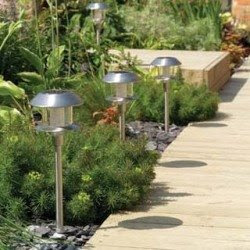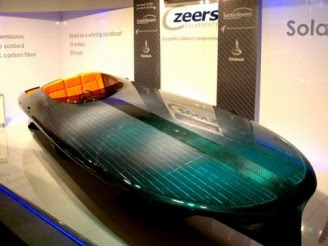 |
PV power, definitely, is not just the energy of the future. Thousands of PV systems are used in the world today for a variety of applications because they can be easily adapted to suit any requirement - large or small. Virtually any power need can be met with photovoltaics, although some are more cost - effective than others.
PV cells have been used for many years in our daily lives to power small applications such as watches and pocket calculators. Today there are available numerous small, medium and large-scale PV applications for residential and industrial purposes. This includes PV power plants, stand-alone PV arrays, building-integrated PV systems, PV solar lighting applications, PV water pumps, solar powered cell phone chargers, and other solar accessories for our homes and businesses. In general, though, PV is not used to generate electricity for space heating, hot water, electric cook stoves or ovens, or other applications with high power needs.
Lighting is one common use for PV systems. Cost-effective applications of lighting powered by photovoltaics include garden lights, lighting for recreational areas, street lights, etc. Remote monitoring, telecommunications equipment, highway construction signs, and navigational warning signals are also excellent applications for PV.
PV systems are an economical option for remote residences and rural areas. In most remote places, it is impossible to connect to the electrical grid and in many such locations, photovoltaic technology is the least-cost option for meeting remote energy needs.
PV systems are used effectively worldwide to pump water for plants, livestock, or humans. Since the need for water is greatest on hot sunny days, PV is a perfect fit for pumping applications. Water can be pumped into a storage tank during daylight hours, then distributed by gravity whenever it is needed. In the developing world, entire village water supplies are powered by photovoltaics.
PV systems offer a number of unique benefits that have led to their rapid growth in popularity in recent years. This growth was particularly impressive in countries such as Japan, Germany and the US.







